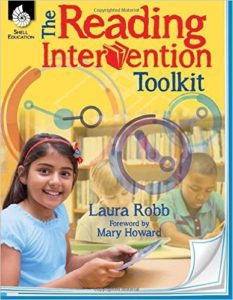The Literacy Principle
By Evan Robb
To develop students’ reading proficiency and motivation to read, we need to make daily teacher read alouds, instructional and independent reading, and writing about reading the core of ELA classes.
There is no quick fix for the reading challenges faced by many schools, but we live in a time when the allure of a quick fix can be very strong. Many educators look for a new program to create a pathway to improvement–a canned program. I have not seen one work. My experience is administrators want to “fix” things, to check the box that something is being done. This thinking does not work; it will not make students into readers; it devalues the teacher as a professional. I have never seen a program create a love of reading.
Balanced literacy focusing on students reading actual books and short stories should be the foundation of a school’s reading curriculum. Does your school have a balanced reading and writing curriculum reflected in each ELA classroom? If you are an administrator are your words supporting balanced literacy or creating a roadblock to change?
Read over my five indicators that are present in classrooms where balanced literacy is part of the reading culture. If you are a teacher, compare my five indicators to your practice. If you are an administrator, these indicators will give you a framework to assess where your school is and to consider possible next steps.
- Teacher Reads Aloud: Yes, reading aloud is perfectly fine! Teachers reading aloud is a great way to introduce students to different authors and genres and model how the teacher thinks about texts. Choose materials students will enjoy! This practice goes south when teachers read out loud for a longer period of time as this diminishes the opportunity for other reading instruction. Tip: The read-aloud should be 10 – 15 minutes of a class.
- Instructional Reading: Teach students to comprehend and think deeply about instructional materials to enlarge their vocabulary, enlarge their prior knowledge, and develop understandings of complex concepts. Great instructional reading teaches skills and strategies at a student’s instructional level. Tip: Whole class novels are not a great way to go. All students rarely read at the same level.
- Independent Reading: In addition to instructional reading, students should read thirty to fifty books a year–books they can read with 99% to 100% accuracy. Like sports, to improve reading, students practice skills and build automaticity in applying specific strategies. When students practice with feedback and support, they get better! It is perfectly fine and beneficial to students to set aside fifteen to twenty minutes of independent reading at school. Reading in school is not a poor use of teachers’ instructional time as long as it is a balanced part of the learning experience for students. It’s important for administrators to understand that teachers are not wasting instructional time when students are silently reading. Tip: Independent reading should always be a homework assignment for students; I caution against getting hung up on how to hold students accountable. Trust students and know that some will not read. However, don’t abandon a practice that improves reading skills because of a few students.
- Choice: Choice is empowering for students and adults too! Give students choice in independent reading materials and as much as possible with instructional texts. Choice results in motivation and engagement; students can explore their passions and interests. Tip: Students have more choices when schools use funds to purchase classroom libraries and more books for the school library.
- Discourse: Make learning interactive, help students clarify their hunches, and provide opportunities for thinking and discussing texts with a partner and in small groups. Tip: In our high tech age, conversing about books will always be valued.
These five ways to improve literacy provide a balanced framework for research-based practices that can help students develop positive attitudes toward reading. A balanced literacy framework develops reading skills and strategies leading to reading stamina, critical thinking, proficiency and yes, a love of reading!
Follow me on Facebook!
Let’s connect on Linkedin
Check out my book, The Ten-Minute Principal, Corwin Press
Also, Laura and I have a podcast channel, The Robb Review Podcast!
![]()









